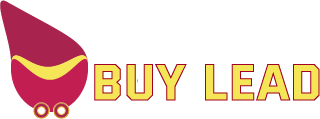Raster to vector conversion is a vital process in the design industry, allowing pixel-based images to be transformed into scalable vector graphics. This conversion is essential for businesses that need high-quality images for various applications, from raster to vector conversion service materials to product packaging. However, many companies struggle to understand the financial implications of this process. Knowing what to expect in terms of cost can help businesses budget effectively and make informed decisions.
Factors Influencing Cost
Several factors influence the cost of raster to vector conversion. One of the primary considerations is the complexity of the original raster image. Simple images, such as logos with clear lines and solid colors, typically require less time and effort to convert, resulting in lower costs. Conversely, intricate images with fine details and gradients may require sms marketing secrets extensive manual adjustments, increasing the overall price. Additionally, the level of expertise of the designer or service provider can impact costs. Experienced professionals may charge more, but their skill can lead to higher quality results.
Choosing Between DIY and Professional Services
Another factor affecting cost is whether to undertake the conversion process in-house or hire a professional service. For businesses with design expertise, using vector graphic software to convert images can be a cost-effective option. However, this approach requires time and familiarity with the tools, which could divert focus from other critical tasks. On the other hand, outsourcing the conversion to a specialized service can streamline the process and ensure high-quality results, albeit at a higher price. Evaluating the trade-offs between DIY and professional services is crucial for determining the most cost-effective approach.
Average Pricing Models
When it comes to pricing models, there are different structures to consider. Many professional services charge per image, with prices typically ranging from $10 to $100 depending on complexity. Some companies may offer bulk pricing for chine directory projects, which can help reduce costs for businesses needing multiple conversions. Additionally, hourly rates may apply for more complex projects that require ongoing adjustments. Understanding these pricing models allows businesses to anticipate their expenses and choose a service that aligns with their budget.
Long-Term Value of Conversion
While the upfront costs of raster to vector conversion may seem significant, it’s essential to consider the long-term value. High-quality vector images offer numerous advantages, including scalability, versatility, and easier editing capabilities. These benefits can lead to cost savings in the long run, as businesses can use the same vector graphics across various platforms and applications without needing to recreate or resize images. Ultimately, investing in this conversion process can enhance brand consistency and improve the overall quality of visual content, making it a worthwhile expenditure.
